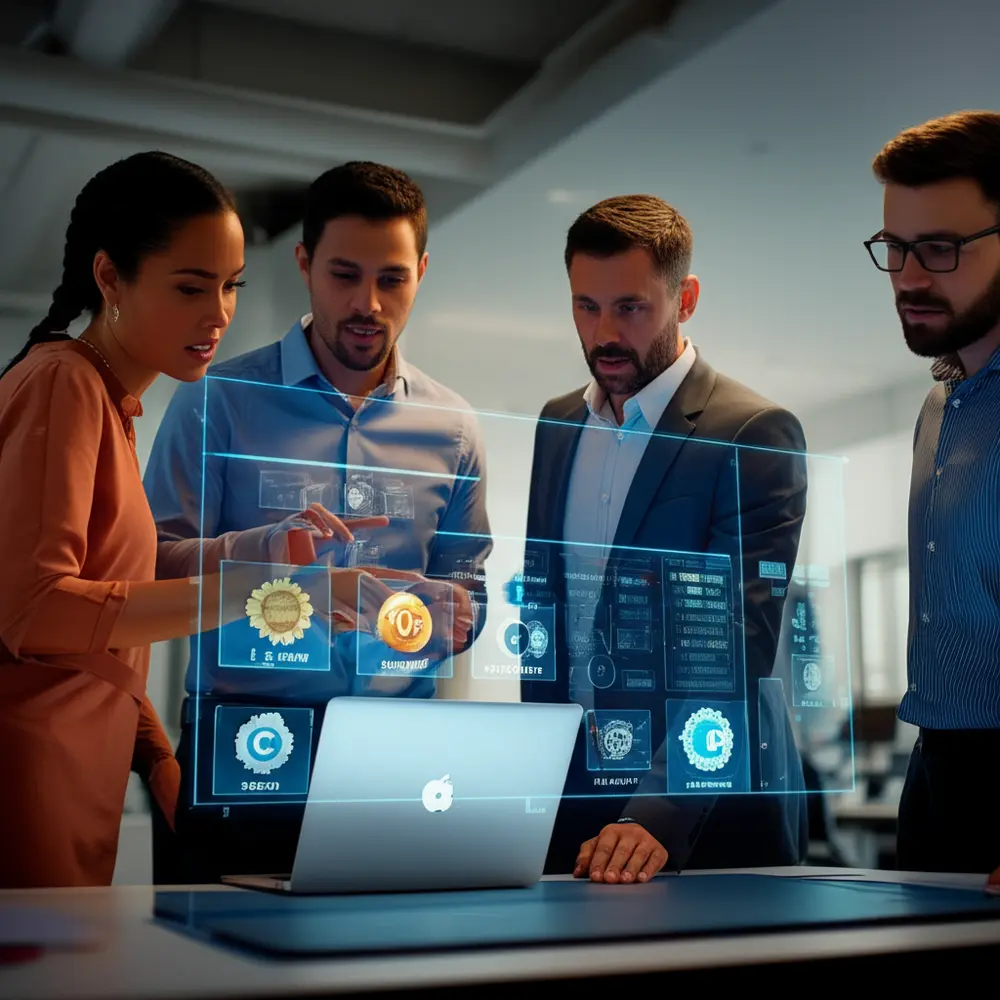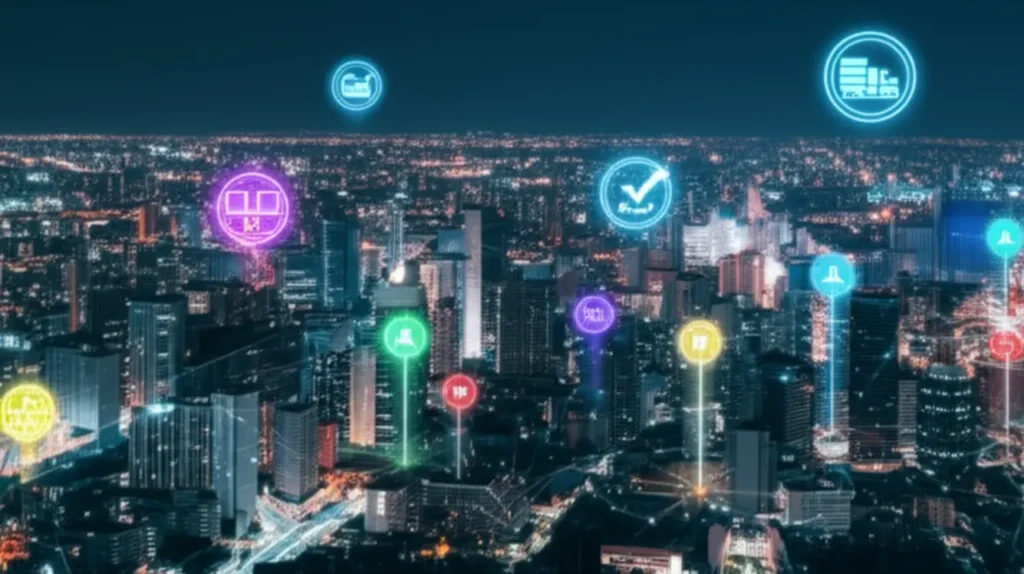Traditional employee training often feels like a chore, leaving your team disengaged and critical knowledge quickly forgotten. You invest resources, yet struggle to see tangible improvements in skill acquisition and long-term retention.
You face the constant challenge of motivating staff and ensuring they truly absorb vital information. Low participation rates and a lack of measurable impact often plague even the most well-intentioned learning initiatives, hindering growth.
Imagine a learning environment where your employees eagerly participate, actively master new skills, and feel genuinely rewarded. Gamification offers a dynamic solution, transforming tedious tasks into interactive, impactful experiences that drive real results.
Transform Your Workforce: The Power of Gamified Learning
You continually seek innovative methods to engage and develop your workforce. Gamification has emerged as a powerful solution, transforming traditional employee training into dynamic, interactive experiences that truly captivate learners.
This strategic approach elevates engagement, fostering a more proactive learning environment. You leverage intrinsic human motivators—like mastery, achievement, and competition—to make education enjoyable and deeply effective.
Gamification applies game-design elements and principles in non-game contexts, such as corporate learning. You define clear objectives, create meaningful challenges, and offer tangible rewards, ensuring that every learning module supports your strategic HR goals.
For instance, imagine the financial services firm, “InvestPro Solutions”. Faced with declining completion rates for their compliance training, they implemented a gamified module. This approach led to a 35% increase in course completion and a 20% improvement in post-training assessment scores within six months.
You tap into both intrinsic motivators—like the desire for autonomy and purpose—and extrinsic factors through points, badges, and leaderboards. Consequently, gamified HR strategies can significantly boost participation and knowledge retention across various initiatives.
Gamification vs. Traditional Training: A Strategic Comparison
You often weigh the merits of innovative versus established methods for employee development. Traditional training, typically involving lectures, manuals, and static e-learning, focuses on information dissemination, but often struggles with learner passivity and low retention.
In contrast, gamification actively involves learners through interactive challenges, simulations, and real-time feedback. You transform passive consumption into an engaging, competitive, and highly rewarding process, significantly enhancing active participation and skill application.
Consider the logistical challenges. Traditional methods often require rigid schedules or lengthy, self-paced modules that employees find hard to prioritize. You see completion rates dwindle, and the actual transfer of knowledge to the workplace remains questionable.
With gamification, however, you create flexible, bite-sized learning pathways that fit into an employee’s daily workflow. This flexibility alone can increase engagement by making learning accessible and less disruptive, directly impacting productivity.
Furthermore, you gain valuable analytics from gamified platforms. You track individual progress, identify knowledge gaps in real-time, and measure the direct impact on performance metrics. Traditional methods rarely offer this level of detailed, actionable insight for continuous improvement.
P&G Gamification: A Pioneering Blueprint for HR Success
Procter & Gamble (P&G) stands as a seminal case study in transforming employee learning. Their innovative P&G Gamification strategy showcases a forward-thinking approach to enhancing skill development and knowledge retention within a vast workforce.
You recognize that traditional employee training often struggles to maintain engagement and produce lasting behavioral change. P&G sought a dynamic solution to captivate learners and foster proactive participation in their educational programs.
The essence of P&G Gamification involved integrating game-like elements into their existing learning modules. You design interactive challenges, quizzes, and simulations that mirror real-world business scenarios, making learning directly applicable to job functions.
Specific mechanics such as points, badges, leaderboards, and progress tracking were central to their design. Furthermore, immediate feedback loops provide learners with instant insights into their performance, fostering a continuous improvement mindset throughout the employee training journey.
These gamified experiences transformed passive knowledge consumption into an active, competitive, and highly rewarding process. Employees are motivated to achieve goals, master new skills, and even compete friendly with colleagues, boosting overall engagement and participation rates significantly.
Designing Engaging Experiences: Essential Features of Gamified Modules
When you design gamified learning, certain features are essential to ensure impact. You must include a clear progression system, using points or levels, so learners always know where they stand and what’s next.
You also need compelling narratives or themes that contextualize the learning, making it relatable and memorable. This transforms dry material into an exciting journey, like a “quest for mastery” in product knowledge.
Immediate and constructive feedback is paramount. You provide instant reinforcement for correct answers and guidance for incorrect ones, allowing employees to learn from mistakes in a low-stakes environment, refining their skills effectively.
The integration of social elements, such as leaderboards and team-based challenges, is also crucial. These features foster healthy competition and collaboration, encouraging peer-to-peer learning and strengthening team cohesion.
Finally, you ensure that content is relevant to job roles and learning outcomes. Irrelevant game mechanics or rewards quickly undermine engagement, so align every element directly with the skills and knowledge your employees truly need.
Quantifying Impact: Measuring ROI in Gamified Employee Training
You need to demonstrate the tangible return on investment (ROI) for any HR initiative, and gamified training is no exception. Market data consistently shows that highly engaged employees are 21% more productive and 59% less likely to be absent.
A recent study by the Global Learning Council indicated that companies leveraging gamification for training saw an average 15% increase in knowledge retention. They also observed a 25% reduction in time-to-competency for new hires, translating to significant operational savings.
You can quantify these benefits. For example, reducing employee turnover by just 10% can save a mid-sized company with 500 employees over $250,000 annually, considering the average cost of replacing an employee is about half their salary.
Let’s illustrate with “TechSolutions Pro,” a software development company that adopted gamified coding challenges. Their turnover for junior developers dropped by 18%, and code bug reports decreased by 12% after six months, directly impacting project delivery times and client satisfaction.
You calculate ROI by comparing the costs of implementing gamification (platform, content development) against the savings from reduced turnover, increased productivity, faster onboarding, and improved performance metrics. This provides a clear business case for your investment.
Boosting Retention and Performance: A Financial Outlook
You understand that higher knowledge retention directly correlates with improved employee performance and reduced errors. This efficiency has a clear financial impact on your bottom line.
Consider a sales team of 100 people at “GlobalConnect Logistics.” Before gamification, they spent 20 hours per month on product knowledge refreshers, with only 60% retention. Their new gamified platform reduced training time to 12 hours per month, with 85% retention, saving 800 staff-hours monthly.
If the average hourly cost per sales representative is $35, you’re saving $28,000 monthly, or $336,000 annually, just from optimized training time and better knowledge application. This doesn’t even account for increased sales from a more informed team!
You can also project growth. If improved product knowledge through gamification leads to a 5% increase in monthly sales conversions for a team generating $1 million in revenue, that’s an additional $50,000 per month, or $600,000 annually. You see the power in these numbers.
The calculation for ROI would be: (Total Benefits – Total Costs) / Total Costs * 100. This formula helps you precisely articulate the financial gains to your stakeholders, demonstrating that gamification is not just engaging, but also a profitable investment.
Navigating Implementation: Challenges, Data Security, and Support
You face several challenges when implementing gamified learning, from securing internal buy-in to integrating new technologies. The initial investment in a robust platform and engaging content can seem daunting.
One critical concern is data security. You handle sensitive employee performance data and potentially personal information. Therefore, ensuring your chosen platform meets stringent security protocols is non-negotiable.
A reputable gamification platform must implement advanced encryption, regular security audits, and access controls to protect your data. You cannot compromise on safeguarding your employees’ privacy and company’s proprietary information.
Furthermore, the importance of robust technical support cannot be overstated. You need a responsive support team available to assist with onboarding, troubleshooting, and continuous optimization, ensuring your gamified initiatives run smoothly.
Without adequate support, even the most innovative platform can become a source of frustration, hindering adoption and negating your investment. Choose a vendor who acts as a true partner in your learning journey.
Ensuring Compliance: Gamification and Data Protection (LGPD/GDPR)
You operate in an era where data privacy regulations like LGPD (Brazil’s General Data Protection Law) and GDPR (Europe’s General Data Protection Regulation) are paramount. Your gamified learning platforms must comply with these stringent requirements.
This means you must ensure transparent collection, processing, and storage of employee data. You need clear consent mechanisms and robust data anonymization features, especially when displaying leaderboards or performance metrics.
Consider “Clínica Saúde Melhor,” a network of private hospitals. They use gamified modules for staff compliance training on patient data handling. Their chosen platform adheres strictly to LGPD, ensuring all training data is encrypted and accessible only to authorized personnel, preventing breaches.
You must also provide employees with the right to access, rectify, and delete their personal data within the gamified system. This transparency builds trust and avoids potential legal complications, protecting both your employees and your organization.
Partnering with a platform provider that understands and actively implements these data protection principles is crucial. You mitigate legal risks and build a culture of security and trust around your learning initiatives.
Seamless Integration and Expert Support: A Crucial Partnership
You know that implementing a new system can be complex. Seamless integration with your existing HRIS, LMS, or other internal tools is vital for smooth operation and data flow. This prevents data silos and administrative headaches.
A reliable vendor offers APIs and connectors that simplify this process. You can then ensure that employee data, progress, and achievements are accurately reflected across your HR ecosystem, providing a holistic view of talent development.
The quality of ongoing technical support directly impacts your success. You need quick responses to queries, proactive maintenance, and regular updates. This partnership ensures your gamified platform continuously performs optimally and adapts to your evolving needs.
For example, “Logística Ágil,” a nationwide transport company, integrated their gamified safety training with their existing HR management system. The vendor’s dedicated support team facilitated the process, leading to a 25% faster rollout and minimal disruption.
To further enhance communication and real-time problem-solving during gamified exercises, consider leveraging tools like Multi-User WhatsApp. This allows for instant Q&A, collaborative challenges, and swift resource distribution, supporting a dynamic learning environment.
Step-by-Step: Crafting Your Own Gamified HR Strategy
You’re ready to implement gamification, but where do you start? Begin by defining your specific HR challenges. Are you targeting low engagement in onboarding, poor knowledge retention in compliance, or slow skill acquisition in sales?
Next, identify your target audience. You need to understand their demographics, learning preferences, and existing tech savviness to design game mechanics that truly resonate with them, maximizing participation.
Then, set clear, measurable learning objectives. What specific behaviors or skills should employees gain? You link these objectives directly to game progression, ensuring that “winning” means achieving desired learning outcomes.
Choose your game mechanics carefully. Points, badges, leaderboards, narratives, quests, or collaborative challenges—you select those that best align with your objectives and audience’s preferences. Avoid over-complicating the system.
Finally, select a robust gamification platform. You need one that offers the essential features, integrates well with existing systems, and provides excellent support. This technology choice forms the backbone of your successful initiative.
From Concept to Completion: A Practical Implementation Guide
You begin by prototyping a small-scale gamified module, testing it with a pilot group of employees. This initial feedback is invaluable for identifying glitches and refining the user experience before a full rollout.
After successful prototyping, you create compelling content. You transform existing training materials into interactive scenarios, quizzes, and mini-games, ensuring they are engaging, informative, and aligned with your learning objectives.
Launch your gamified program with a clear communication strategy. You explain the benefits to employees, outlining how it will enhance their skills and career development. Excitement and understanding are key to high adoption rates.
During and after launch, you continuously monitor engagement and performance data. You track completion rates, knowledge retention scores, and feedback. This ongoing analysis allows you to identify areas for improvement and adapt your strategy.
Finally, you refine and iterate. Based on your data and feedback, you update content, adjust game mechanics, and introduce new challenges. This continuous improvement ensures your gamified learning remains fresh, relevant, and impactful for your workforce.
Unlock Potential: Cultivating a Future-Ready Workforce
You recognize that P&G Gamification offers a compelling blueprint for modern HR. This approach goes beyond merely making learning fun; it systematically unlocks employee potential, fostering a highly skilled, motivated, and engaged workforce.
By embracing gamification, you strategically position your organization for future challenges. You build a culture of continuous learning and adaptability, ensuring your teams are always ready for evolving market demands and technological shifts.
The insights from P&G’s success demonstrate that innovation in HR strategy yields profound benefits. You achieve higher knowledge retention, increased productivity, and a more engaged talent pool, critical for sustained competitive advantage.
Ultimately, you move from reactive training to proactive development. Gamification empowers your employees to take ownership of their learning journey, transforming your HR department into a strategic driver of organizational success.
You are not just training; you are inspiring mastery, fostering collaboration, and cultivating a workforce that thrives on challenge and achievement. This is the future of human capital development, and you are leading the way.






